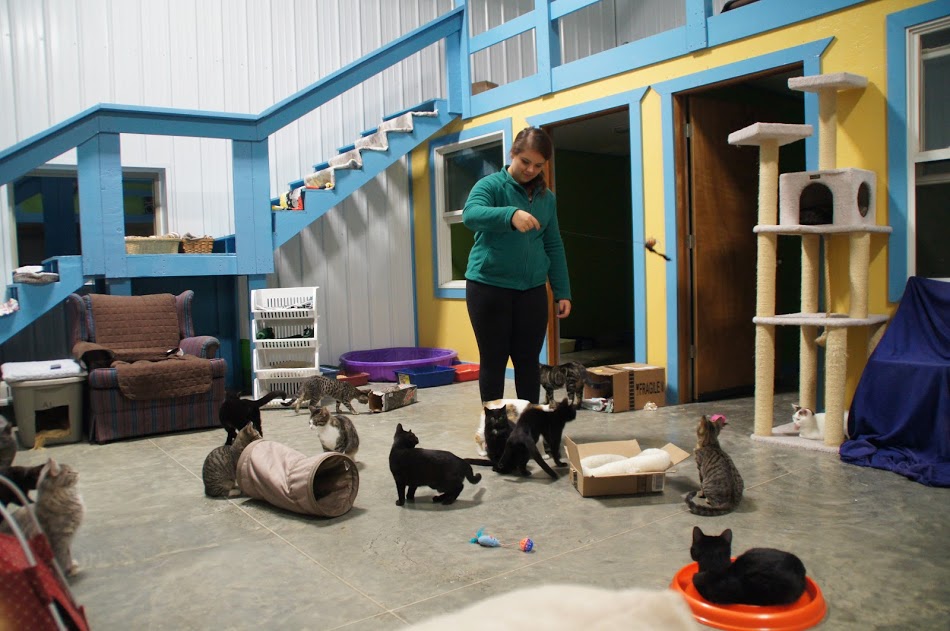I’m not sure how many research labs around the country have a ball pit, but if I had to guess, I’d say there is exactly one: The University of Illinois’s cat research lab.
This humane research facility is a converted barn and features a full-sized tree, several couches, scratching posts, and a floor littered with toys for its 35 feline residents. It’s dual licensed as a federal US Department of Agriculture animal research center and an animal shelter, making it the only research facility of its kind in the US.
Videos by VICE

As detailed in a recent paper in the Journal of Feline Medicine and Surgery, the research facility was created by University of Illinois researchers in order to study a new type of feline contraceptive that could drastically reduce feral cat populations. Although spaying and neutering cats is an effective way to control feline populations, the minor surgeries are expensive and invasive. An injectable contraceptive vaccine called GonaCon showed promise as an alternative population control mechanism in a variety of mammals, including laboratory-raised cats, but testing its effectiveness in the wild proved difficult.

To address this research dilemma, the researchers created a habit where feral cats could hang out and enjoy themselves and demonstrate a more “natural” dynamic than in a traditional laboratory.
“Many facilities have come a long way in making research conditions more humane for the animals, but they still involve small enclosures without a lot of enrichment,” said Amy Fischer, a researcher at the University of Illinois’ Department of Animal Sciences. “We wanted to make our cats’ environment much more stimulating.”
Of the 35 cats that live in the lab, 30 are female and all the cats were taken from local animal shelters. This in itself was a major departure from usual research protocols, which almost always use genetically identical, lab-raised cats. The hope was that this would provide better insight into the effectiveness of the vaccine as it would actually work in the wild.

Only 20 of the females at the research facility received a GonaCon injection, but all the female cats were allowed to intermingle and breed with the 5 male cats just as they would outside the lab. As reported in the Journal of Feline Medicine and Surgery, GonaCon proved ineffective at population control in the lab. 12 of the 20 females that received the vaccine were impregnated within a few months of receiving the vaccine and a total of 14 of the vaccinated cats were pregnant within a year.
Read More: Cats Are Actually Nice, Scientists Find
Nevertheless, Fischer said new feline contraceptives are being developed and will likely be tested on cats living in the lab in the future.
More
From VICE
-

Blankstock / Getty Images -

Robert Alexander/Getty Images -

Predrag Popovski / Getty Images -

Pla2na/Getty Images
